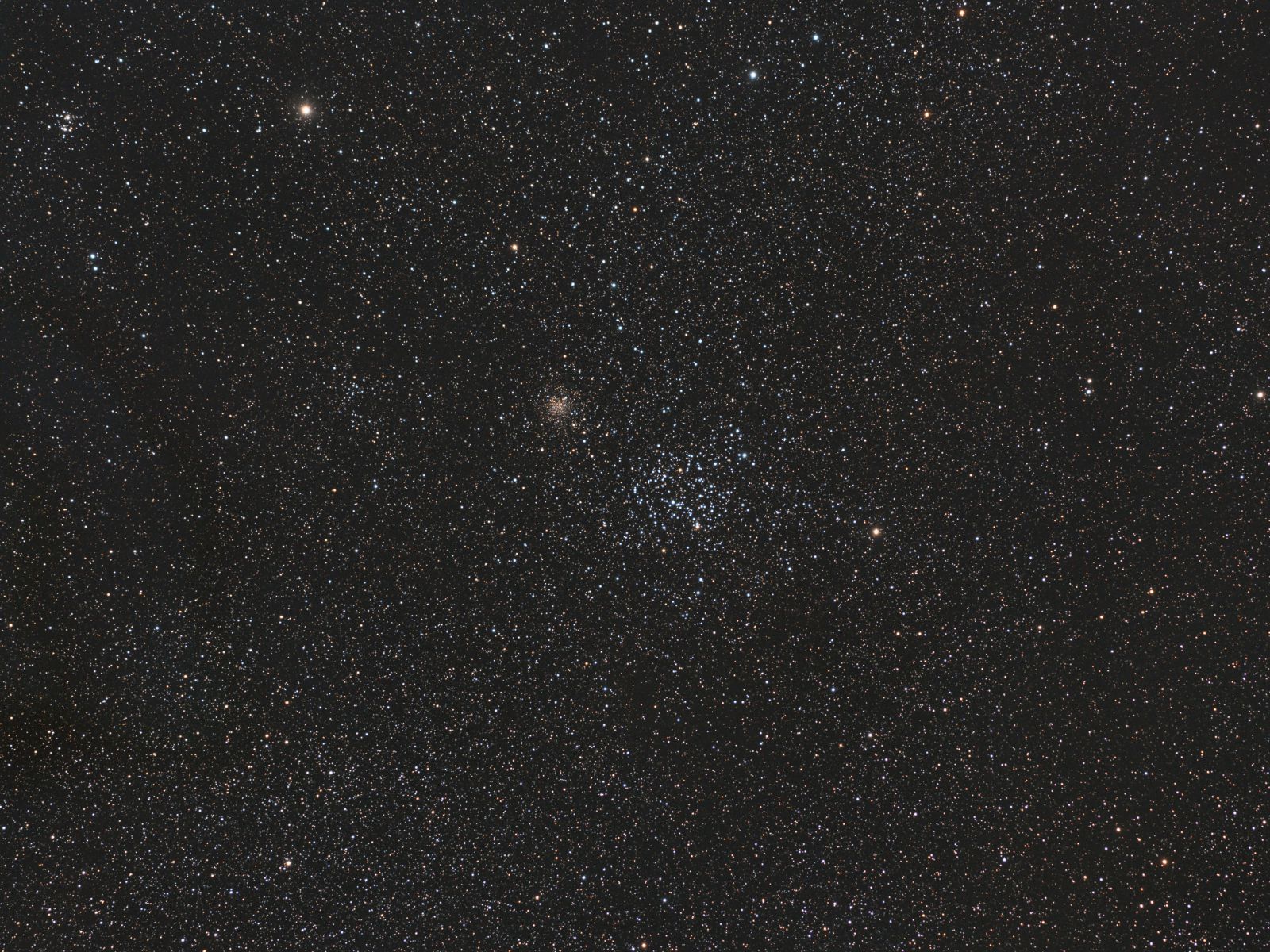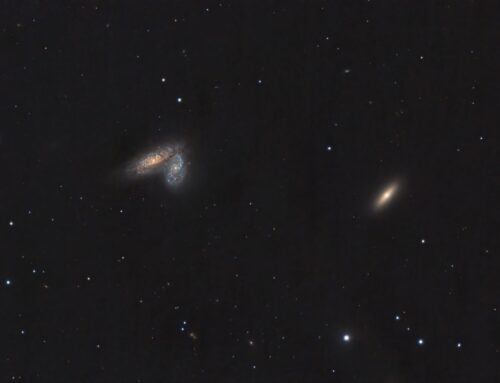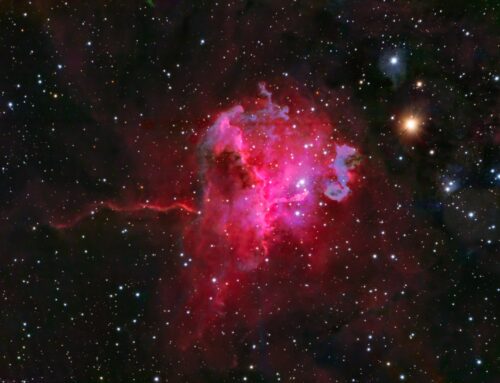Open Clusters M35 and NGC 2158
 Click image for full size version
Click image for full size version
February 20, 2020
M35 is the large prominent star cluster near the centre of the field in this image. It covers about almost as much sky as the full Moon and is about 2,800 light years distant. To its upper left is NGC 2158, another similar star cluster that lies about 5 times further away, at 11,000 light years. The redness of NGC 2158 is related to its age of around 2 billion years. M35 is much younger and still contains many hot blue and white stars. Both of these objects are known as Open Clusters (or Galactic Clusters). In other spiral galaxies, the same type of object gives a knotty appearance to the spiral arms. I love open clusters, though I more often shoot extended objects like galaxies and nebulae. They’re particularly good for shooting on nights that might not be suitable for nebulous faint objects. There are a couple of other star clusters and some galaxies hiding in this image. See the annotated image to help you find them.
Tekkies:
Takahashi FSQ-106 ED IV @ f/3.6, QHY367C one-shot colour camera, and Optolong L-Pro filter, Paramount MX, unguided. Acquisition, and focusing with TheSkyX. Focus with Optec DirectSync motor and controller. Automation with CCDCommander. Equipment control with PrimaLuce Labs Eagle 3 Pro computer. All pre-processing and processing in PixInsight. Acquired from my SkyShed in Guelph. Half-moon, average transparency and poor seeing. Data acquired February 14, 2020.
28x2m with Optolong L-Pro filter (Total = 56m)
Image scale 2.6 arcsec per pixel
Data Reduction and Processing
Preprocessing: The WeightedBatchPreProcessing script was used to create a master frame.
Channel Registration: To improve channel registration, the RGB colour channels were extracted and aligned with StarAlignment, using Thin Plate Splines with Distortion Correction and the green channel as the reference frame. The registered colour channels were recombined with ChannelCombination.
Gradient Removal: DBE was applied using Subtraction to remove the minimal gradient that remained after integration.
Colour Balancing: The colour image was colour balanced with PhotometricColorCalibration.
Linear Noise Reduction: MultiscaleLinearTransform was used to reduce noise in the background areas, using an internal mask to protect bright structures. Layer settings for threshold and strength: Layer 1: 5.0 0.85, 2 iterations; Layer 2: 3.5, 0.75, 2 iterations; Layer 3: 3.0, 0.5, 1 iteration; Layer 4: 1.0, 0.25, 1 iteration.
Stretching: HistogramTransformation was applied to make a pleasing, bright image, with background set to an intensity of approximately 0.10.
Nonlinear Noise Reduction: TGVDenoise was used in L*a*b* mode to reduce noise with a mask used to target the background areas and protect the stars (max. 1000 iterations and convergence selected for both lightness and chrominance).
Final Steps: Background, nebula and star brightness, contrast, colour saturation were adjusted in several iterations using CurvesTransformation with masks as required. ICCProfileTransformation (sRGB IEC61966-2.1; Relative Colorimetric with black point compensation) was applied prior to saving as a jpg.






Leave A Comment